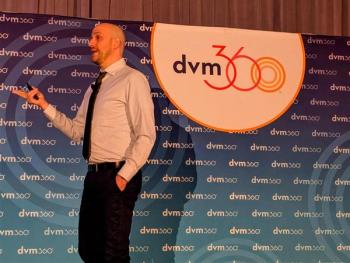
Digital radiography: Is it a good fit for your practice?
Digital radiography is gaining popularity in veterinary medicine because it offers several advantages over traditional film-based radiography, including improved imaging latitude, fewer retakes, access to teleradiology, and improved patient care through better image quality.
Digital radiography refers to imaging modalities that obtain a digital radiographic image without using film. This technology is gaining popularity in veterinary medicine because it offers several advantages over traditional film-based radiography, including improved imaging latitude, fewer retakes, access to teleradiology, and improved patient care through better image quality.
Digital radiography, however, is not a panacea; its benefits are often overstated, creating unrealistic expectations for veterinarians considering the move to this technology. A clear understanding of the benefits of digital radiography is essential to determining whether it is right for your practice. Ultimately, the benefits that digital radiography will bring to a practice will vary depending on your practice type, the system you purchase, your practice's current radiographic quality, and the initial cost of the system.
Matt Wright, DVM, DACVR
BENEFITS FOR ALL
Some of digital radiography's benefits are universal, regardless of the digital radiography system you purchase or your practice's size.
Fewer retakes
The sensors used in digital radiography systems have greater exposure latitude than film does.1 Exposure latitude can be thought of as the forgiveness of the system to errors of technique. In many cases, if a digital image is initially too dark, it can be computer-enhanced to produce a diagnostic image. So digital radiography will decrease (but not eliminate) the number of retakes needed because of exposure errors.2
Digital radiography systems vary widely in their exposure latitude. Some systems are technique-dependent and leave little room for error, while other systems are more technique-independent and leave a large margin for error when the operator selects exposure settings. A system with a wide exposure latitude will generate high-quality images more consistently than a system that is less forgiving. Thus, be sure to consider the consistency of image quality when purchasing a digital radiography system. And keep in mind that digital radiography will not decrease the number of retakes needed because of patient positioning errors.
An Overview of Digital Radiography's Benefits
Teleradiology
Teleradiology has decreased the time and distance barriers that previously hampered referring radiographs for a second opinion. In the past, mailing films to a radiologist meant a radiograph report turnaround of at least a few days. With teleradiology, report turnaround is measured in hours and even minutes. Access to teleradiology is greatly enhanced by ensuring that your system can send Digital Imaging and Communications in Medicine (DICOM) images to a remote DICOM server (see the article "An introduction to DICOM" ).
Many veterinary radiologists now require images in DICOM format for review. These images are unaltered before sending, and they contain useful information such as the patient's name, the date and time of acquisition, and other important identifying information. DICOM files are large, so a high-speed Internet connection with a fast upload speed is generally necessary for efficient teleradiology.
BENEFITS FOR SOME
Several potential benefits of digital radiography will only be realized in certain veterinary practices or with certain digital radiography systems. These benefits vary in importance depending on the size of the practice and must be weighed against the initial cost of the digital radiography system.
Hard-cost savings
Digital radiography can reduce the per- study cost of radiography because there will be no film costs, no real estate costs for a room to archive radiographs, and no processor maintenance costs for direct radiography (DR) systems or lower processor maintenance costs for computed radiography (CR) systems (see the article "Exploring your digital radiography equipment options" ).3 These savings will be easily realized by larger veterinary practices and referral practices because larger practices spend more money on film and processing than smaller veterinary hospitals do.
For smaller practices, the initial cost of digital radiography will likely outweigh any hard-cost savings. For example, the yearly maintenance contract may cost more than a small practice will spend on film and processing chemicals in a given year. In their cost analyses, practitioners must also consider the cost of computer hardware upgrades, future software upgrades, monitor upgrades, network upgrades, off-site image backup, a faster Internet connection, and additional computer monitors.
Soft-cost savings
Soft-cost savings are difficult to quantify. They include how much time technicians must spend looking for lost films or filing and retrieving films.3 For a large referral hospital whose staff is constantly searching for films, the soft-cost savings can be substantial since technicians will spend less time on these menial tasks and have more time for meaningful tasks. For most smaller veterinary hospitals, these soft-cost savings will likely be less apparent.
Ease of use
Digital radiography systems can be much easier to use than film-based systems and often require less technical expertise to obtain high-quality radiographs. However, digital radiography systems vary widely in their ease of use. Practices purchasing systems that are user-friendly and that consistently produce high-quality images will often take more radiographs each month than before the digital radiography system was installed. Conversely, in practices with difficult-to-use systems or with less computer-savvy staff members, a digital radiography system may become a source of frustration.
Increased efficiency
In human medicine, DR systems, such as flat panel detectors and charge-coupled device (CCD) cameras, increase patient throughput since the time necessary to obtain digital radiographic images is less than with CR and film.4 Similar studies have not been done in veterinary medicine, but in my experience, DR systems increase veterinary patient throughput as well. Increased throughput is clearly a benefit in larger veterinary practices and referral hospitals, but for many smaller hospitals, the increased throughput and time savings may not be as substantial. Therefore, despite the reduced patient throughput associated with CR, CR remains a valid imaging modality in veterinary medicine.
Decreased radiation exposure to patients and personnel
Fewer retakes mean fewer exposures, resulting in an overall decrease in radiation exposure to patients and personnel. Some digital radiography systems also require less radiation per exposure to produce a high-quality radiograph than film-based systems do. Conversely, other digital radiography systems necessitate more radiation (sometimes a large increase) per exposure.5 The overall effect on radiation doses to patients and personnel will vary depending on the digital radiography system.
Improved radiographic quality
In any practice that has problems obtaining high-quality radiographs using film, digital radiography will likely improve patient care by improving radiographic quality. Most digital radiography systems are less user- and technique-dependent than film-based systems, thereby reducing the number of poor-quality radiographs due to exposure errors. Darkroom and processing artifacts are also eliminated. Improved image quality is one of the main reasons many veterinary practices are migrating to digital radiography.
WEIGHING THE BENEFITS AND COSTS
So is digital radiography right for your practice? For new practices that do not have a film system or processing room and for large practices, the move to digital is easily justified. But the case for digital radiography is not as simple for smaller hospitals. Thoroughly evaluating the potential benefits of digital radiography, understanding the differences among digital radiography systems, performing a cost analysis, and assessing your practice's needs and expectations will help you determine whether digital radiography is right for you.
Matt Wright, DVM, DACVR
The Veterinary Imaging Center of San Diego
7522-7524 Clairemont Mesa Blvd.
San Diego, CA 92111
REFERENCES
1. Curry III TS, Dowdey JE, Murry Jr RC. Christensen's physics of diagnostic radiology. 4th ed. Baltimore, Md: Williams & Wilkins, 1990;402-403.
2. Merritt CR, Tutton RH, Bell KA, et al. Clinical application of digital radiography: computed radiographic imaging. Radiographics 1985;5:397-414.
3. Orand MR. Cost analysis: film vs. PACS. Radiol Today 2004;5:38.
4. Andriole KP, Luth DM, Gould RG. Workflow Assessment of digital versus computed radiography and screen-film in the outpatient environment. J Digit Imaging 2002;15 (Suppl 1):124-126.
5. Wright M. Expected exposure techniques in veterinary digital radiography. Animal Insides 2006. Available at:
Newsletter
From exam room tips to practice management insights, get trusted veterinary news delivered straight to your inbox—subscribe to dvm360.




